Joseph Marienstadion
If you are looking for a completely authentic Belgian stadium, it is in Forest, in the Brussels region, that you will find it.
Although recently renovated, the Joseph Marienstadion has kept its face since 1926.
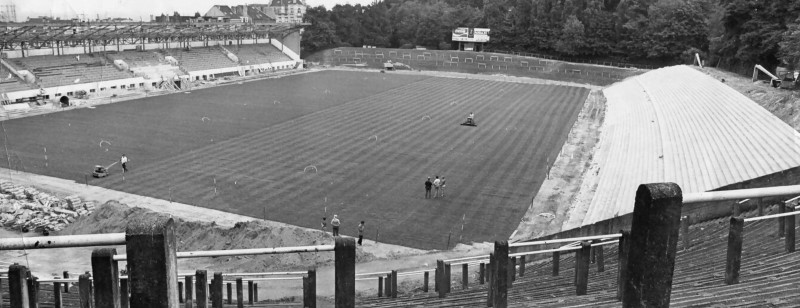
A stadium nestled in a park
Tight in its small stadium on Vorststraat, where it has played since 1908, the Union Saint-Gilloise plans to move to a larger site.
Club quickly became popular following its first titles of Champion of Belgium in 1904, 1905, 1906, 1907, 1909, 1910 and 1913, the
Union outrageously dominates all Belgian football.
Founded in 1895, the yellow and blue club will be crowned Champion in its first season in Division 1.
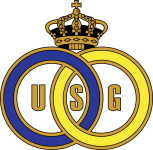 AIn order to be able to accommodate more and more people, the Union requests to be able to use part of the Dudenpark in Vorst,
this vast 25-hectare park belonging to the Royal Donation. The latter accepted in 1914 and hired a 2.5-hectare plot.
AIn order to be able to accommodate more and more people, the Union requests to be able to use part of the Dudenpark in Vorst,
this vast 25-hectare park belonging to the Royal Donation. The latter accepted in 1914 and hired a 2.5-hectare plot.
Unfortunately, the First World War broke out and the first stadium project was logically canceled. However, as early as 1915, work
began and it was a revised project that slowly began to emerge. Once the conflict is over, the Union can launch its new pride, the
Joseph Marienstadion. The stadium is named in honor of the President of the Union and instigator of the new stadium.
To show off the new infrastructure, it is no more and no less than the great AC Milan who is invited. In the grandstand, the future
King Leopold III attends the match, gymnastics demonstrations and athletics events.
The stadium can hold nearly 25,000 people.
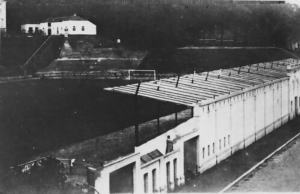
One of the stadia of the Red Devils
 If the big stadiums began to multiply in Belgium in the 1920's (as in Antwerp with the Bosuil and the Kiel, in Brussels with the Charles Malisstadion or the Duden Park, in Liège with Rocourt and Sclessin), the country still does not have no specific national stadium to the national team. This is how the Red Devils
are forced to regularly change stadiums to be able to play. Between 1921 and 1929, the Joseph Marienstadion welcomed the winners of the
1920 Olympic Games. The Daring stadium was more often visited by the Devils, although of smaller capacity.
If the big stadiums began to multiply in Belgium in the 1920's (as in Antwerp with the Bosuil and the Kiel, in Brussels with the Charles Malisstadion or the Duden Park, in Liège with Rocourt and Sclessin), the country still does not have no specific national stadium to the national team. This is how the Red Devils
are forced to regularly change stadiums to be able to play. Between 1921 and 1929, the Joseph Marienstadion welcomed the winners of the
1920 Olympic Games. The Daring stadium was more often visited by the Devils, although of smaller capacity.
The construction of the Jubelstadion at Heizel in
1930 will end the wandering of the Devils.
However, the national team will replay from time to time in club stadiums but never again in Dudenpark.
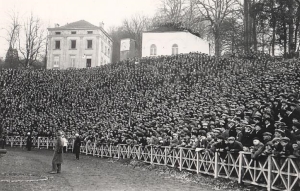
Expeditious work
In 1921, the club management decided to enlarge the stadium, already being too small and old-fashioned.
Sportingly, the Union has become the number 1 club in Belgium. Determining only in first or second place in the championship
between 1911 and 1924, the number 10 also won the Belgian Cup in 1913 and 1914. The number of spectators explodes and the Union
plays all its sold-out matches.
Unfortunately, the commune of Vorst has views on the Union stadium : it plans to build the new Communal House. With plans for the
stadium’s new main stand already ready, a power struggle between the club’s management (supported by the federation) and the municipality
ended with the Union’s victory. Vorst built in a new Town Hall in its original location.
As soon as the victory is confirmed, a special commission authorizes the start of work. On April 19, 1926, as soon as the Union - Daring match
was over, the main stand was destroyed and replaced by a prestigious construction by architect Albert Callewaert and sculptor
Oscar De Clerck. Its remarkable Art Deco facade is decorated with seven carved panels representing the two flagship disciplines of
the Union : football and athletics. The facade will be protected in 2009.
The construction was a real tour de force : between the first pickaxes and the inauguration, only 118 days would have been necessary to
build this large stand. The roof structure has been built in just one month.
The inauguration was held on August 29, 1926 in the presence of numerous personalities and of Prince Charles of Belgium, future Regent of the Kingdom. The Joseph Marienstadion reaches its maximum capacity with 30,000 places.
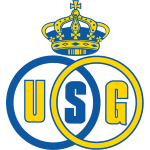 On the championship side, if the Union experienced a downturn between 1925 and 1931, the number of titles increased back in 1933
with three new crowns. Without knowing it, the title of Belgian Champion of 1935 will be the last of the club. Its three titles
will be worth the nickname of "Union 60" at the club : between 1933 and 1935, the Union will no longer know defeat in the league
and it is ultimately the great rival of the Daring who will manage to end this impressive series, series which has never been matched.
On the championship side, if the Union experienced a downturn between 1925 and 1931, the number of titles increased back in 1933
with three new crowns. Without knowing it, the title of Belgian Champion of 1935 will be the last of the club. Its three titles
will be worth the nickname of "Union 60" at the club : between 1933 and 1935, the Union will no longer know defeat in the league
and it is ultimately the great rival of the Daring who will manage to end this impressive series, series which has never been matched.
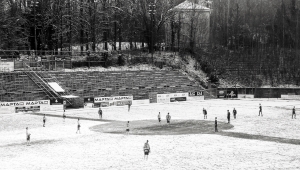
The fall of the Union
Little by little, the Union’s dominance over all of Belgian football is starting to wane. Facing new competition from
Anderlecht, the Butte's club (stadium nickname) will gradually return to the ranks until undergoing relegation at the
end of the 1948-1949 season. Unthinkable ten years earlier !
The Union moved up in D1 very quickly but the club understands that its glory days are behind it.
The club stabilized for a decade and won several participations in the Fair Cities Cup (1958-1960, 1960-1961, 1961-1962, 1962-1963,
1964-1965) and even reached the semi-finals of this competition in 1960.
But the worm is in the fruit and the last season of the Union in D1 will be the 1972-1973 season.
Since then, the Union has moved from Division 2 to Promotion, with most of the time spent in Division 3.
At the beginning of the 1970's, the side stand is rebuilt and the roof of the main stand was renewed, but the rest of the
stadium was no longer maintained : trees began to grow in the terraces. They are condemned and the capacity drops to 5,500 places.
Even though the number of spectators has dropped drastically, the Union has always been able to count on supporters with unwavering
loyalty. Perhaps that is what saved the Union from being struck off as was the case with the other old Brussels clubs.
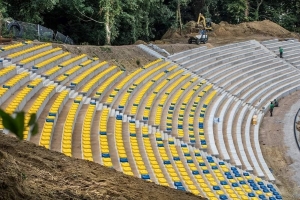
Renaissance of the stadium and club
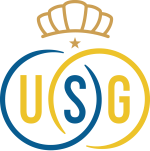 The Union seems to be one of those invulnerable clubs.
The Union seems to be one of those invulnerable clubs.
Yet condemned to wander out of Division 1, the number 10 is still present. With the third best list of prizes in Belgium (behind
Anderlecht and Club Brugge, but ahead of Standard Liège), the old yellow and blue club and its stadium were reborn in 2016.
Work is finally done and the Union can therefore dream of a big return to Division 1. During this work, the Union will have to
emigrate to the Koning Boudewijnstadion,
much too big.
To do this, the bleachers are rebuilt but as the stadium is protected, they had to return to the original shape. And as the D1 standards
stipulate a minimum of 5,000 seats, the old terraces are converted into seating stands. The capacity goes back to 8.081 places, enough
to be able to evolve in Division 1.
In 2021, the Union has finally reclaimed the place it should never have left : the top of Belgian football, after 48 years of waiting.
To see how the old Brussels club will manage to manage this comeback among the elite. One thing is certain, the public will still respond,
despite the many ups and downs that the club has known.
Pictures
Joseph Marienstadion
The first stadium grandstand, built in 1915.
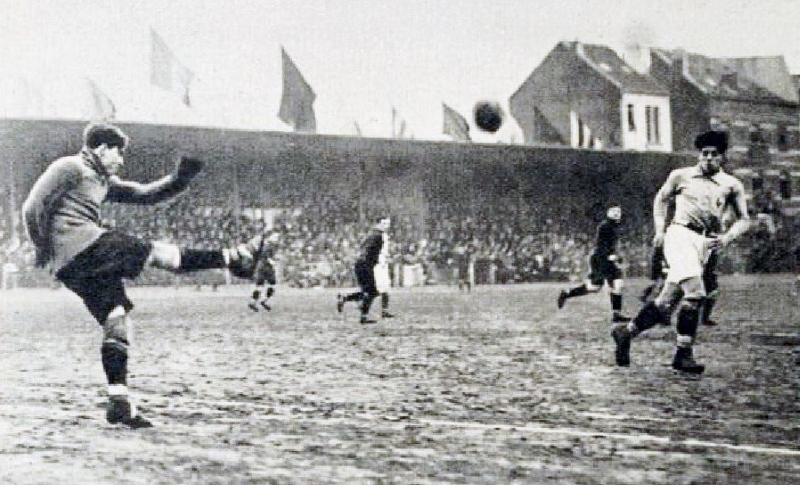
Joseph Marienstadion
Friendly match between Belgium and France (4-1) on February 25, 1923.
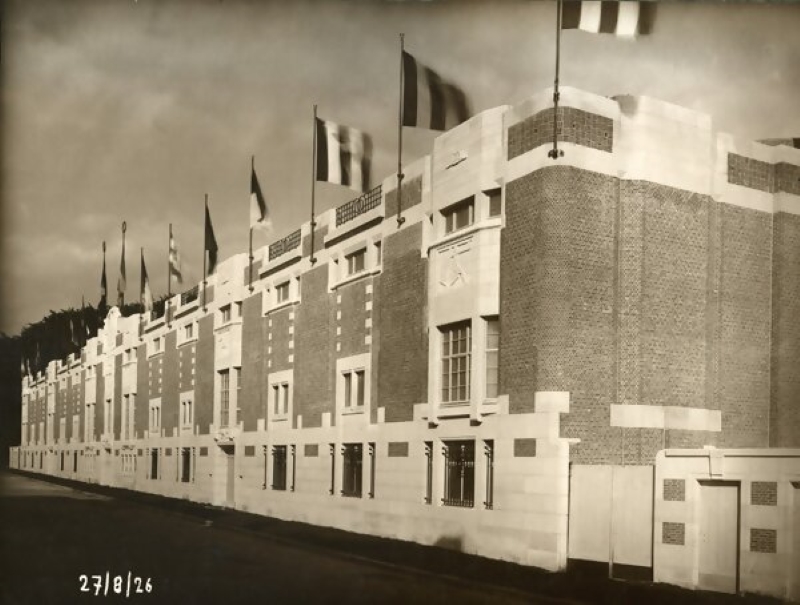
Joseph Marienstadion
In 1926, inauguration of the new grandstand. An architectural wonder.
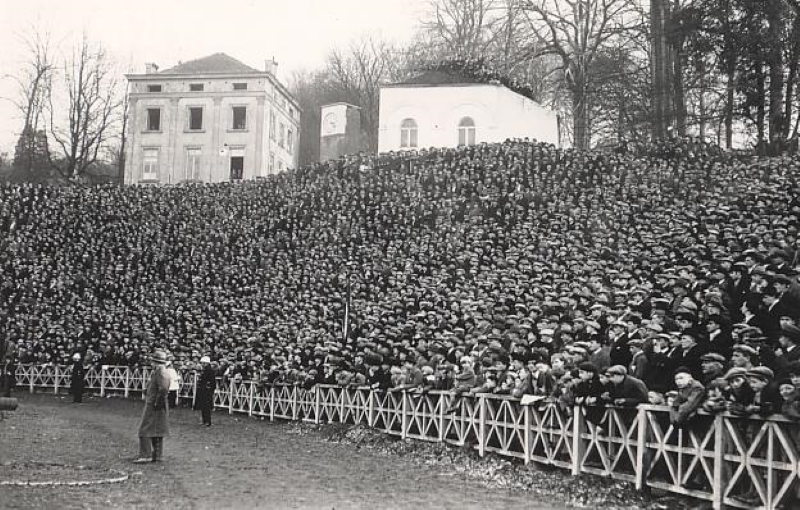
Joseph Marienstadion
The crowded stadium in the 1930's. Afar, the changing rooms at the top of the Butte.
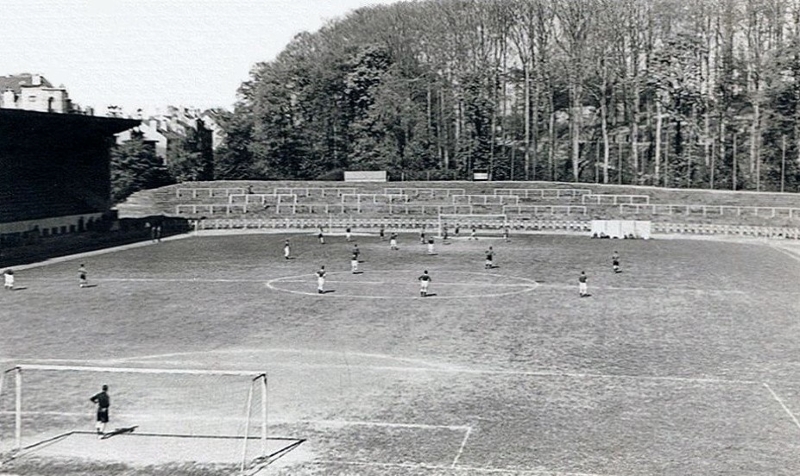
Joseph Marienstadion
The Joseph Marienstadion in 1941.
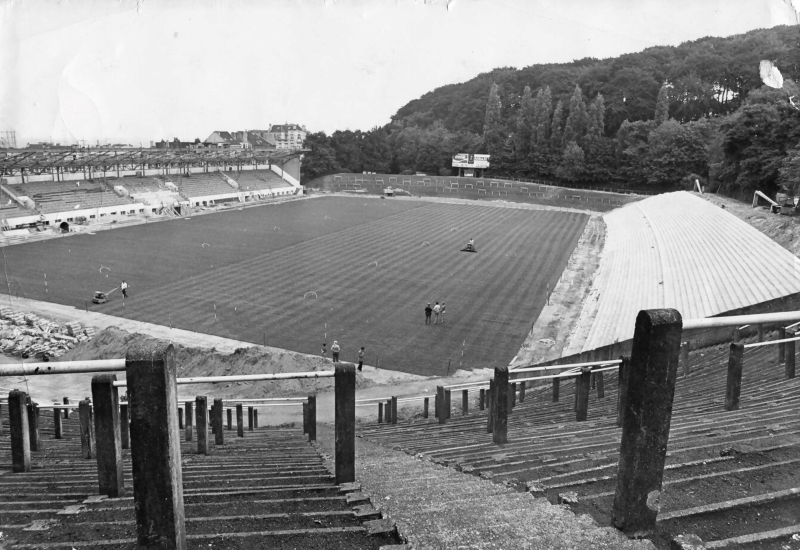
Joseph Marienstadion
Refurbishment of the side stand and the roof of the main grandstand in the 1970's. The end's terraces will never be renovated.
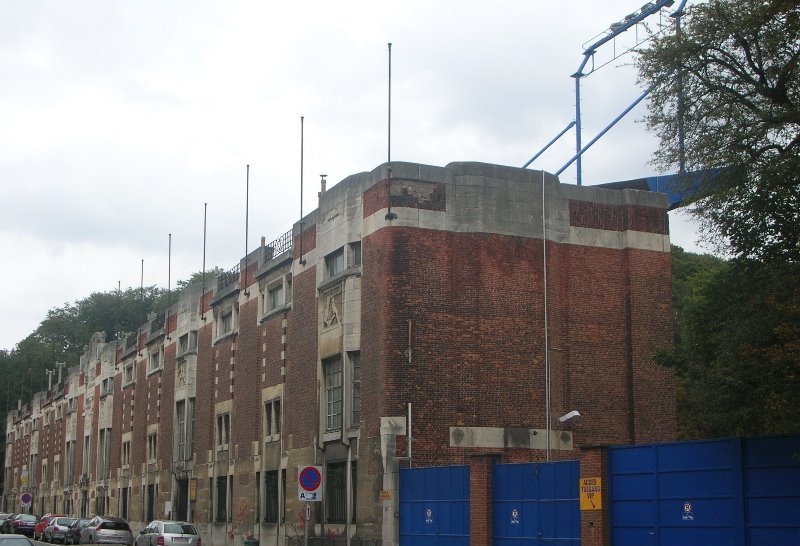
Joseph Marienstadion
The beautiful protected facade of the main grandstand.
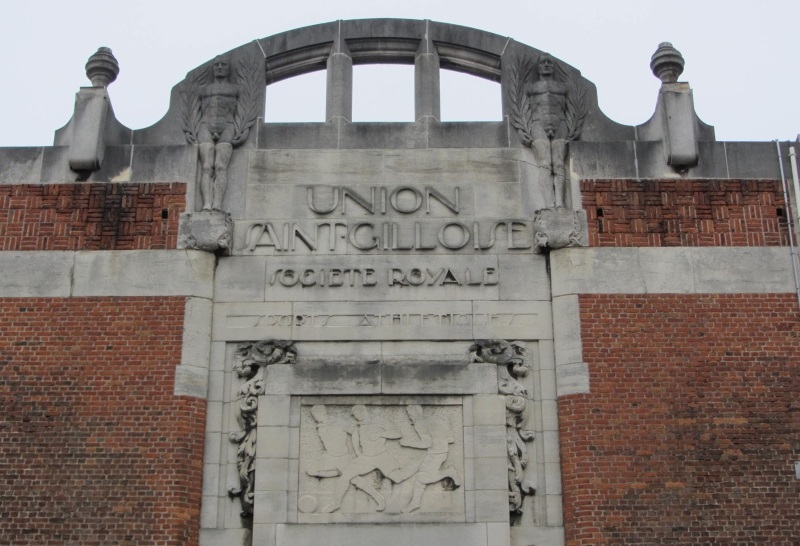
Joseph Marienstadion
The pediment, in the center of the main grandstand.
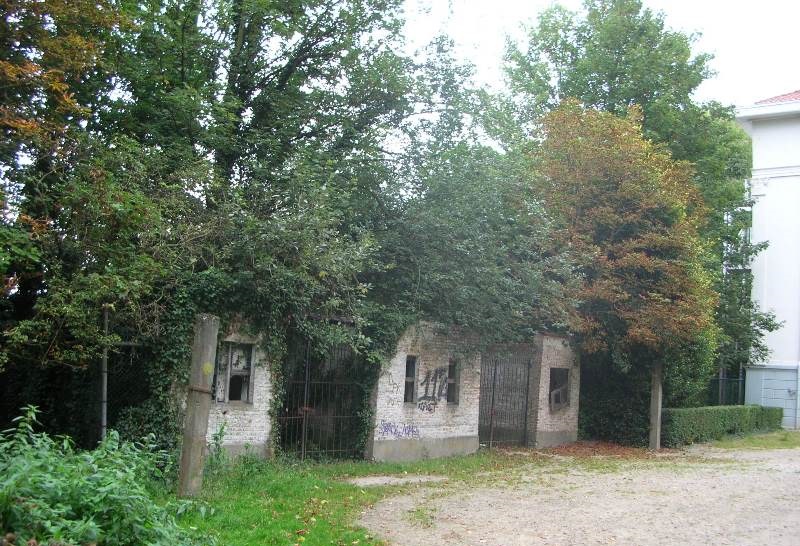
Joseph Marienstadion
Former ticket offices, completely abandoned, near the old changing rooms.
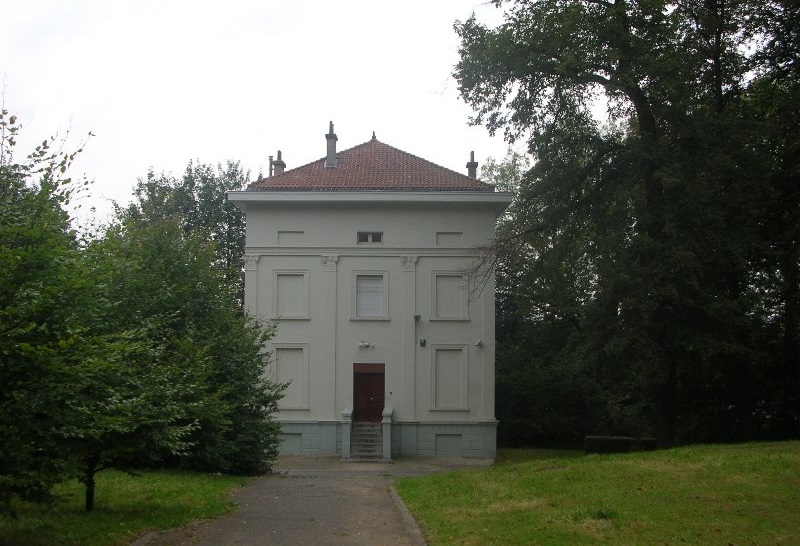
Joseph Marienstadion
The old changing rooms, now cut off from the stadium. It is the house of the former owners of Dudenpark.
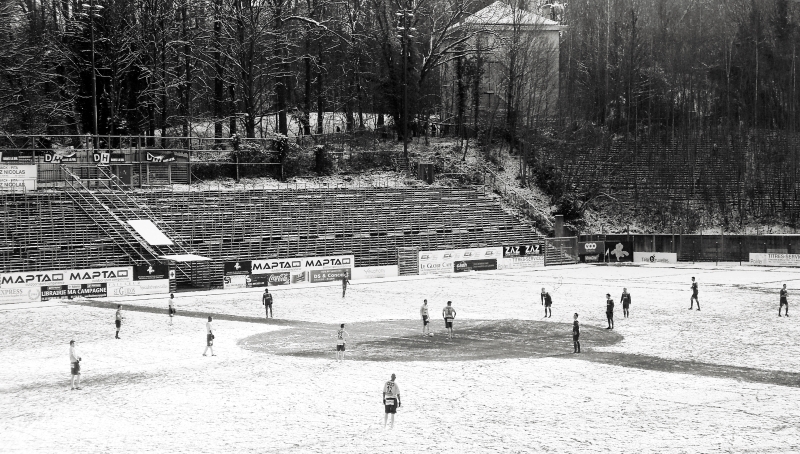
Joseph Marienstadion
The big terrace and the old changing rooms, drowned in the vegetation.
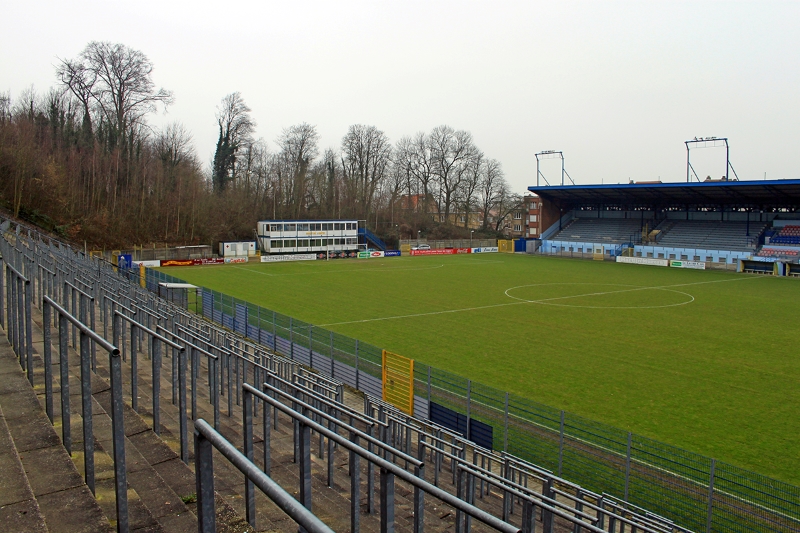
Joseph Marienstadion
Only the two side stands are still in service.
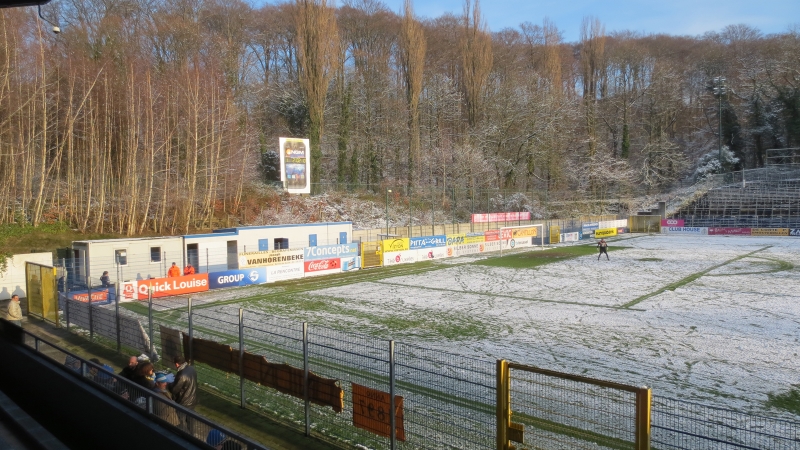
Joseph Marienstadion
The ex-terrace on the scoreboard side.
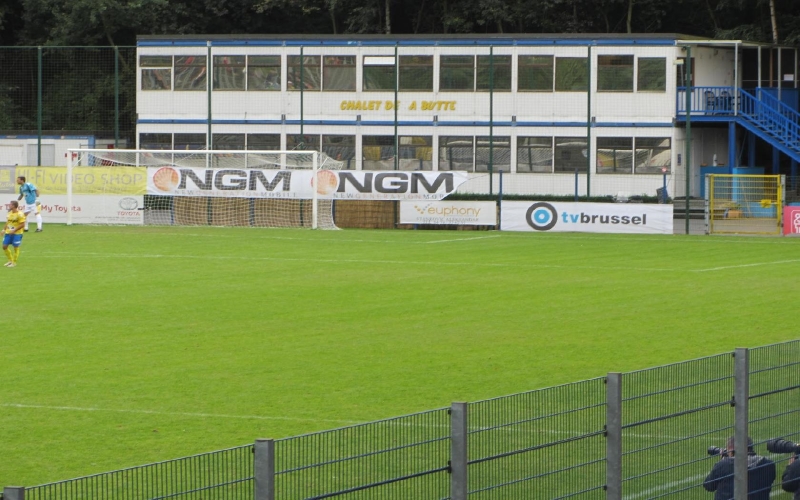
Joseph Marienstadion
On the other side, a prefabricated building built in front of the old bleachers.
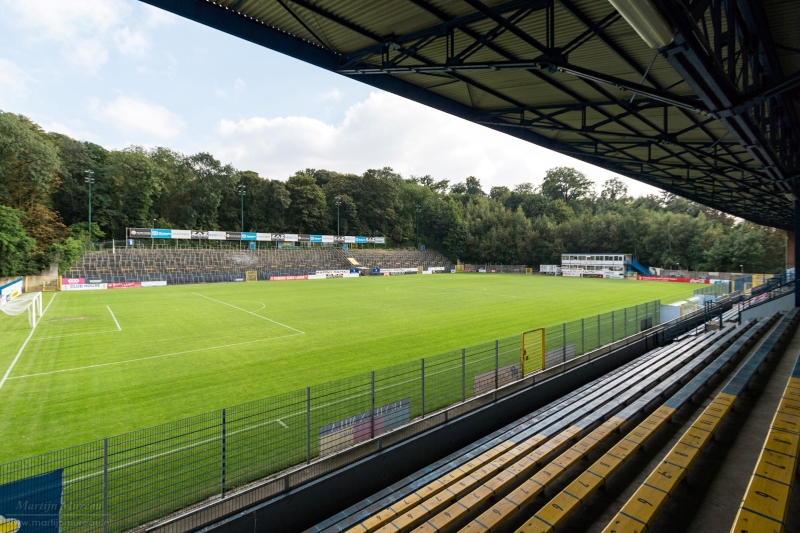
Joseph Marienstadion
In this configuration, the stadium can accommodate 5,500 people.
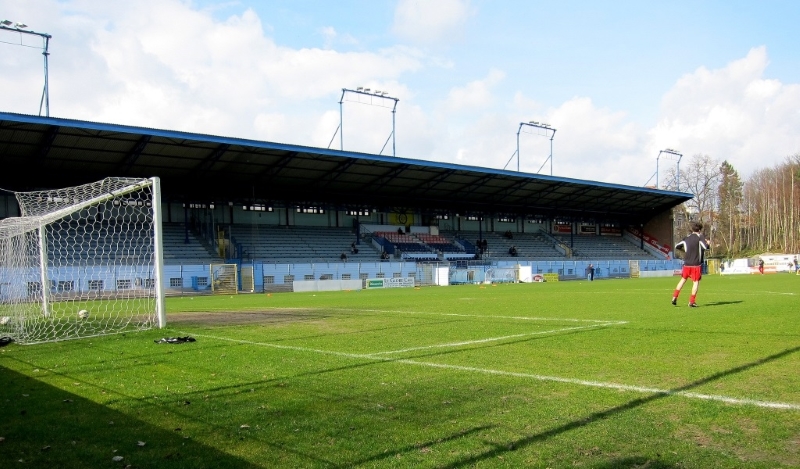
Joseph Marienstadion
The main stand in 2012.
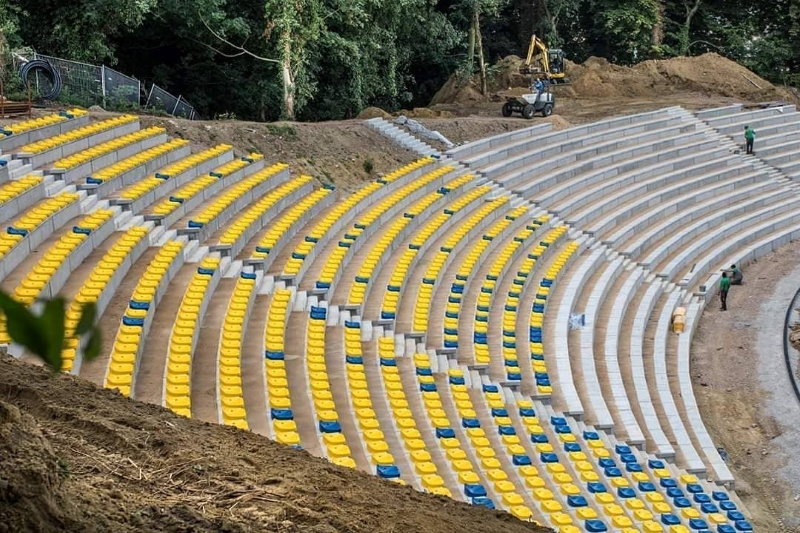
Joseph Marienstadion
In 2016, finally the major renovations take place.
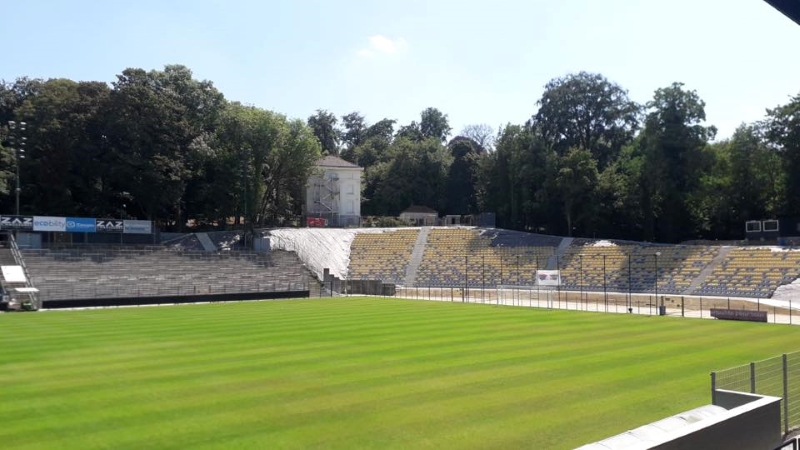
Joseph Marienstadion
The stands behind the goals are converted into uncovered seating stands.
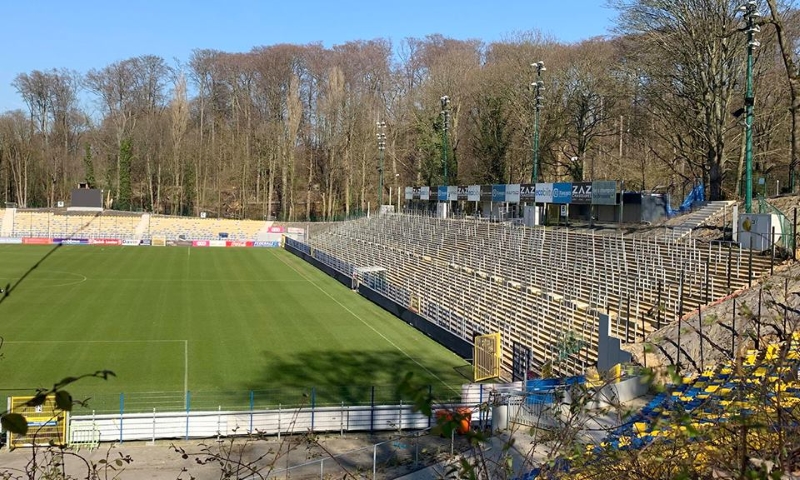
Joseph Marienstadion
The stadium's capacity rises to 8,081 seats.
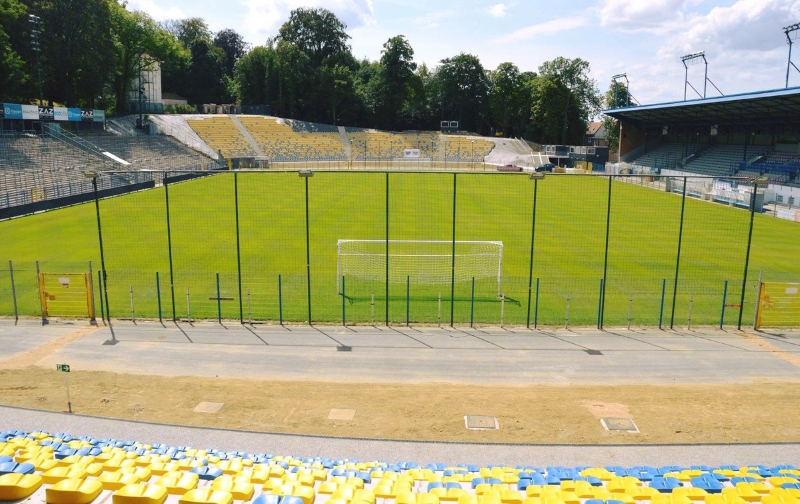
Joseph Marienstadion
The stadium now meets the highest standards of the Belgian federation.
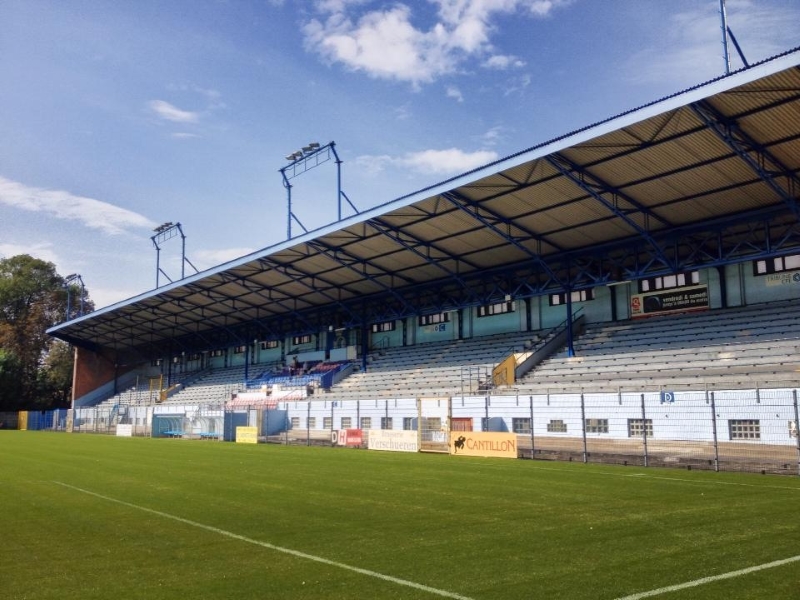
Joseph Marienstadion
Despite the works, the stadium has retained all its authenticity.
Note
-
This article comes from my old site www.foothisto.be but was never published.
It has been somewhat modified and updated recently (April 2020).
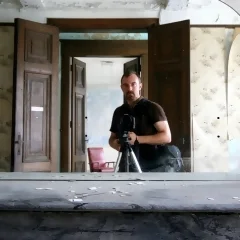
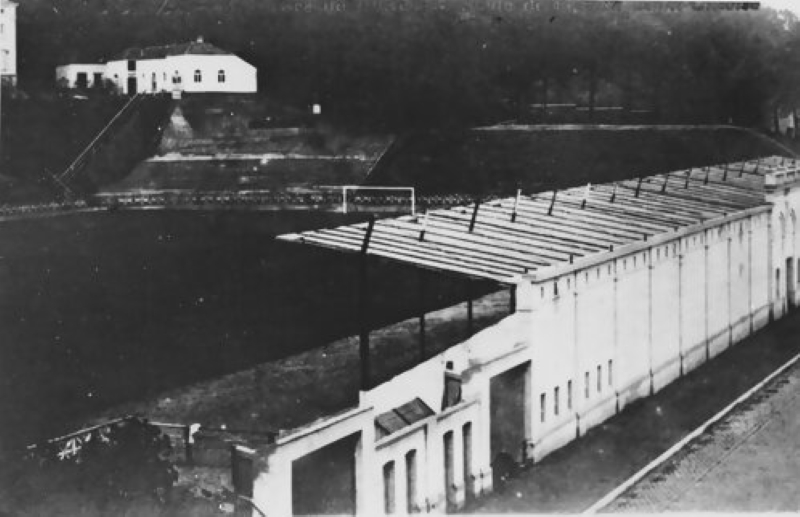
Soyez le premier & devenez quelqu’un de bien • Be the first & become a good person